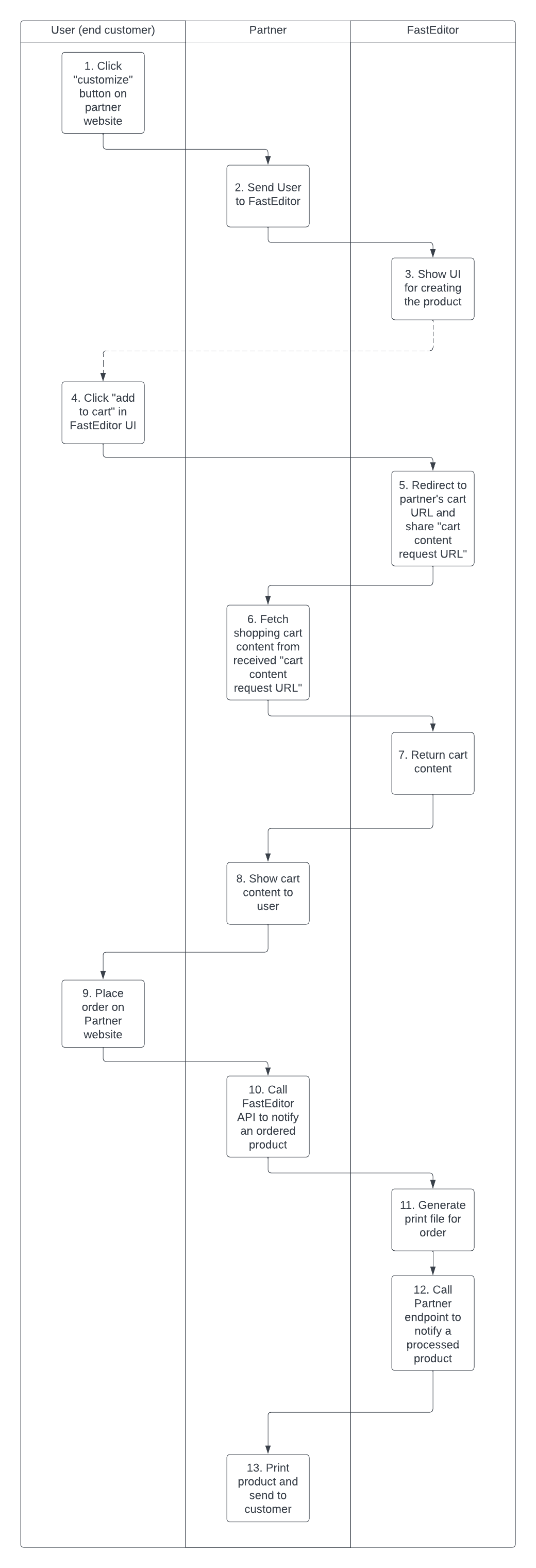Overview
The integration process has been designed in a way that generates the least amount of friction when moving the user to and from the FastEditor software, leading to maximum conversion results.
The process is described in the following 7 easy steps:
The customer visits your webshop, chooses a product that it wants to personalize, and clicks the "customize" button.
The webshop calls the Smartlink endpoint with the SKU of the selected product. The SmartLink endpoint returns a personalized editor URL that preserves the user's login status and localization preferences. The webshop redirects the user to this editor URL.
The customer uses FastEditor to personalize the chosen product. The user can edit, design, and modify the product according to their preferences. It will (optionally) be presented with a 2D and 3D preview of the product and can be presented with various cross-sell.
The user clicks the "add to cart" button in FastEditor, indicating it is done with the personalization of the product.
We redirect the user to your provided shopping cart URL. A query parameter
fe_cart_urlis appended to that URL that represents the URL at which you can make a request for the user's shopping cart content.- Important: Make sure to validate that the domain of the received
fe_cart_urlmatches with the expected value (by default:api.{yourlabel}.fasteditor.com)
- Important: Make sure to validate that the domain of the received
The webshop makes a request to the received URL, which includes a token that validates the access to the cart's content, and will be immediately invalidated after the request, so it can only be used once.
The FastEditor API returns the items to be added to the user's cart (see Add To Cart.
The webshop can now show the cart content to the user and the user proceeds to the checkout.
Payment: Customers proceed with the checkout process on your website. They make the necessary payment for the order.
Sale Notification: Once the transaction is successfully finalized, your system needs to initiate this API call to our system. This call serves as a notification to inform us about the sale that has just taken place.
File Generation: Upon receiving the sale notification, our order processing pipeline generates the required files that are ready for printing.
File Delivery: Once the print ready files have been generated, we send an API call to your system. The payload shares the URL where the print files can be downloaded.
